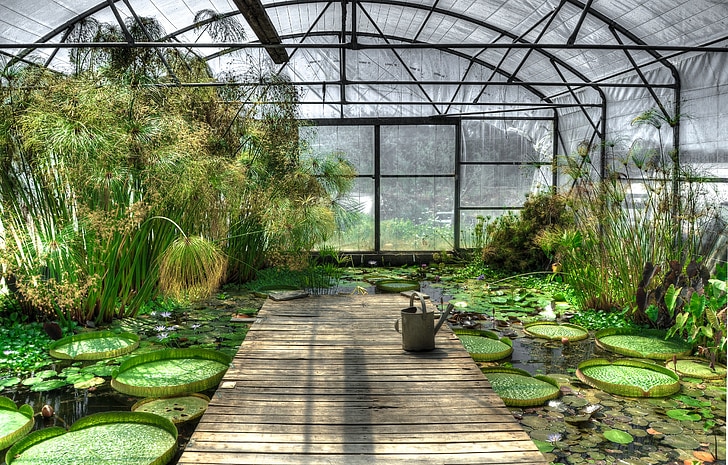There are a few ways on how to oxygenate water for plants; by using air stone, air diffuser, siphon, oxygen gaps, or simply letting the roots hang and temperature low.
Why is it necessary, you ask? Well, oxygenating water is a great way to increase nutrient uptake of your plants. And doing these extra steps will make the plant grow healthier, bigger, and more productive. Let’s find out more!

Why Oxygenate Water For Your Plants
Before you should know how to oxygenate water for plants in your greenhouse, you must understand why it is needed.
Roots that lack oxygen will most likely substitute other compounds, causing cell damage and increasing the possibility of developing diseases. Even if such is not the case, it will still cause calcium deficiency to plants.
Temperature positively affects oxygenation in water. The lower the temperature, the more oxygen it can hold. But this is not always the case, especially if during summer when it is scorching hot.
Rainwater provides adequate oxygen for the plants unless it has been stored for too long. You can also get the same level of oxygen from rivers. However, you may not have access to these all the time.
So if you have your greenhouse at home, this will be very useful to you.
Oxygenating Water For Plants In Hydroponics
In this article, we listed other ways on how to oxygenate water for plants.
#1 Using an air stone
For hydroponic gardeners, using an air stone to oxygenate water is very common. This method is inexpensive and very easy to find. Air stones come in many shapes and sizes; therefore, you can always get one to fit your hydroponic system.
The air stone oxygenates the water by allowing the air pump to push air through the stones. Since it is porous, the air is split to create a bunch of large bubbles.
Since the bubbles formed are large, they are not the most efficient. Large bubbles rise quickly that it almost does not touch the roots. But with hydroponics trending among plant growers, there are now many air stones that create a smaller bubble in the market.
Another drawback of using air stone is they are breakable. So it is recommended to purchase one that comes with plastic reinforcement. Nevertheless, this method still provides for your hydroponic plants.
#2 Using an automatic siphon system
Exposing the root system of the plant in the air provides oxygen to the root hairs. This process can be done by draining the hydroponic grow bed. You can remove the water from the hydroponic using a siphon. One of the most popular is the automatic hydroponic siphon.
The automatic hydroponic siphon comes in different types, such as the bell, loop, and u. Whichever style you choose, they all work on the same principle. A vacuum created by the siphon will suck the water out of the grow bed when the standpipe reaches a point filled with water.
#3 Giving an oxygen gap
In some hydroponic systems, plants acquire oxygen through the air gap. Place a nutrient solution in the grow bed. By doing so, you are certain that it will provide oxygen for the plant to breathe.
When the root system of your plant is strong and healthy, it can take in the oxygen. Just make sure that it touches the nutrient solution. The air gap between the plant root and the nutrient solution is where the plants can get oxygen.
#4 Using an air diffuser
An air diffuser is another common way of adding oxygen to your hydroponic system. They are a bendable tube with holes that release oxygen in the water. Although air stone distributes air evenly, air diffuser has smaller bubbles, ensuring that it reaches most root hairs.
The large bubbles in air stones rise quickly, thus not allowing enough time to touch the root hairs. Smaller bubbles from the air diffuser stay in the water for more extended periods, thereby exposing the root system to oxygen; this ensures maximum oxygenation for plants.
#5 Using a stirring pump
While using an air stone and air diffuser creates oxygen that the plants need, it also causes the fertilizer’s pH to rise. This increase is because the bubbles from these two methods react with the carbon dioxide in the air. Therefore, using these in longer periods is not advised.
One way to give out oxygen with too much carbon dioxide is by stirring the water at regular intervals. This process keeps the water dissolved oxygen stable and also prevents stagnation and growth of harmful bacteria.
#6 Hanging the roots
If you are using a vertical hydroponic system or aeroponic system, you get the most oxygen for your plants. A hydroponic plant does not necessarily need to sit in nutrient water. Some plants can be suspended in the air, where the nutrient solution is sprayed or pumped.
In the most vertical hydroponic system, the nutrient solution is pumped to the top. Then it falls, dripping nutrients on the plant roots along the way. On the other hand, spraying the solution is the most favorable when you have an aeroponic system.
Final Words
Ensuring that the plants get the necessary nutrients they need will yield healthier and more productive results. If you perform necessary steps on how to oxygenate water for plants recommended in this article, your efforts will surely be rewarded with excellent crops.

About 50-60 years ago some research was conducted concerning the ability of humans being able to breathe under super-oxygenated water. My understanding at the time was that it was successful.